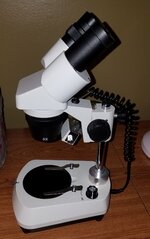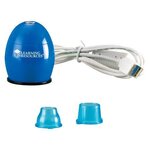OntarioArch
Sr. Member
I am about begin 'cleaning' my modest collection that has been acquired from Old Timers, estate sales, and yard sales. A stereo microscope is on order; Jim Bennett's book has been read twice with notes taken  , and now I need a long wave uV lamp to help detect restorations. I sure see a lot of short-wave uV lights for sale: I thought they were too dangerous for casual use?
, and now I need a long wave uV lamp to help detect restorations. I sure see a lot of short-wave uV lights for sale: I thought they were too dangerous for casual use?
Any recommendations for a long-wave uV light? Thanks!
 , and now I need a long wave uV lamp to help detect restorations. I sure see a lot of short-wave uV lights for sale: I thought they were too dangerous for casual use?
, and now I need a long wave uV lamp to help detect restorations. I sure see a lot of short-wave uV lights for sale: I thought they were too dangerous for casual use?Any recommendations for a long-wave uV light? Thanks!
Amazon Forum Fav 👍
Upvote
0







